Text
BLOG #4: Art Patron Profile - Art Patronage and Exploitation

Retrieved from: MetMuseumPH, 2022
Looking into the deeper side of arts, there is a system termed “art patronage” wherein artists are being commissioned by patrons to make an artwork depending upon their request. These patrons are usually comprador bourgeoisies, whom are influential individuals belonging to the upper class, allied with foreign investors and corporations. Initially, what we think would be the beneficiaries of this system are the artists, as they get to be paid and at the same time have exposure from their commissioned artwork. But realistically, in a deeper critical perspective, patrons actually benefit much more from this system. They may use this opportunity to raise their prestige and wealth by using the artwork to boost their reputation publicly, and gain tons of connections with other influential investors and such. And in its nature, art patronage is also bound to exploitation and dispossession.
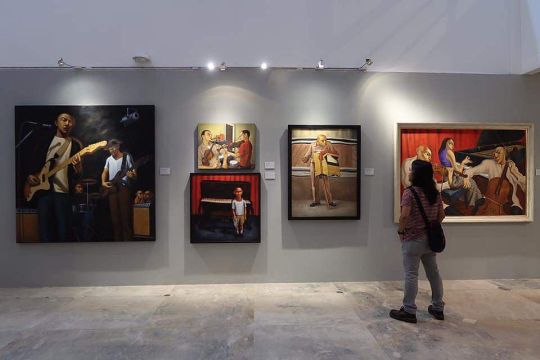
Retrieved from: MetMuseumPH, 2022
One particular example of such art patrons is Joselito “Butcher” Campos. Campos is the founder of the Metropolitan Museum of Manila, one of the notable museums in the country. The museum was originally established in 1976 as a location for international art exhibitions with the goal of increasing cultural diplomacy while increasing Filipino exposure to other cultures' visual arts. The focus then changed to fostering local pride in the Filipino people's own aesthetic and cultural history, which is principally represented by the Bangko Sentral ng Pilipinas' (BSP) valuable collections of prehistoric gold and pottery. Being a venue that provides various visually-appealing sights of art for the masses, it’s a fact that there are already numerous commissions that have been negotiated behind all these arts from different artists. It is undeniable that artists, especially new ones, benefit a lot from the transaction as they get commission and exposure from the patron’s gallery. However, on a deeper side, patrons actually benefit much more from this as they can use it to accumulate wealth, obtain greater connections, and gain more social and class prestige.

Retrieved from: Bilyonaryo, 2021
While being the founder of MET Museum, Campos also founded NutriAsia in 1991, which led to the acquirement and consolidation of smaller food companies into what is now one of the Philippines’ leading producers of condiments. What many people do not know behind this big company is how vile the workers are being treated despite their service of labor. Activists launched a boycott campaign against them for underpaying workers, detrimental workplace and working conditions, as well as unfair compensation compared to workers’ labor. The campaign resulted into a bloody fight, wherein many activists got heavily injured and some went missing after being violently dispersed by the company themselves. After the issue, the company got away with it and still remained one of the leading producers in the country. Whereas people fighting for their rights got neglected and worse, received violence in return due to the opponent’s power.
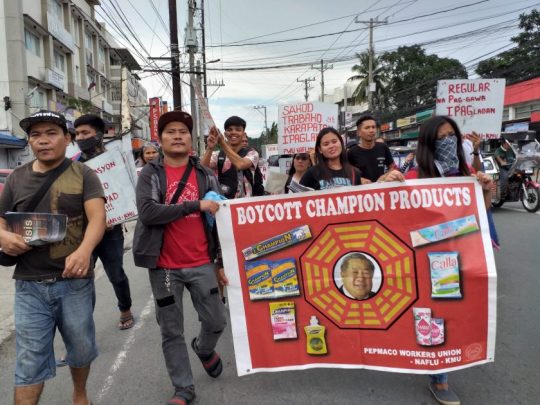
Retrieved from: Bulatlat
In the controversy’s connection to art patronage, since Campos is known to be an art patron, his image to the public may be seen as someone who is giving the act of “generosity” to artists. He gains trust and a good reputation from the masses, thus masking what NutriAsia company did to their workers. It’s deceptive how his Art Gallery aims to expand the public’s appreciation to the Philippine culture, when at the same time his condiment company violates the rights of individuals who are part of our own culture. This leads into a conclusion that art patronage is not just a simple act of generosity. Some are being done to accumulate power and thus attain the ability to cover a dark truth behind their regime.
This is another attestation that art is beyond its aesthetics and visual attributes. Art can be political and can be attributed to certain ideologies that can mold different human perspectives.
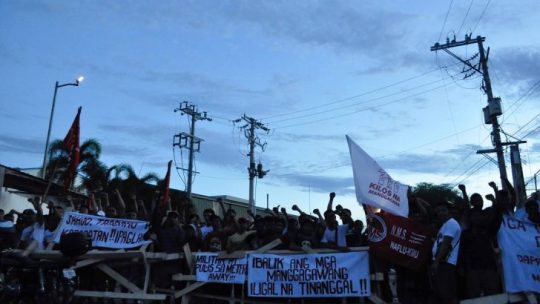
Retrieved from: Bulatlat
References:
Suárez, A. V. (2019, February 12). 176 Gifts/176 Dispossessions. Open Space. https://openspace.sfmoma.org/2019/02/176-gifts-176-dispossessions/
Metropolitan Museum of Manila. Retrieved from: https://metmuseum.ph/about-the-met/
Violent dispersal of NutriAsia workers draws wide condemnation. (2018, July 30). Philstar.com. https://www.philstar.com/headlines/2018/07/30/1838184/violent-dispersal-nutriasia-workers-draws-wide-condemnation
8 notes
·
View notes
Text
BLOG #3: Capital Mapping

Have you ever wondered why there are individuals who have much more power and authority than others? How about having a thought on how they were determined to be more prestige? Was it naturally given to them or was there a basis? How is this affecting the society in a continuous manner? All of these queries are essential in understanding the changing social and cultural world of ours. In relation to that, the “Theory of Cultural Capital” which was developed by French sociologist Pierre Bourdieu, would be a significant topic on how we can acknowledge the underlying concepts behind it, as well as expound on how cultural capital is acquired, used, exchanged, and maintained in the society.
In Pierre Bourdieu’s theory of cultural capital, capital is coined as the distinctions that arise between individuals and groups as a result of differences in wealth, family background, access to education, and occupation. It is usually associated in providing advantage to an individual’s status within a group or a society; Basically, the foundation of social life. Cultural capital can be categorized into three states; the Embodied, Objectified, and Institutionalized states. Embodied state refers to the qualities of one’s mind and body which includes our skills, accent, dialect, posture, and mannerisms. For instance, individuals with more capital in this state tend to be more knowledgeable and proficient in speaking a particular language than other individuals, as they were already exposed to different sources of knowledge, unlike others who were not. For the next state which is objectified, it pertains to material belongings that attain cultural significance and are therefore used to indicate social classes. Higher capital in this state are those who possess more trendy and luxurious materials like apple devices, expensive cars, branded bags and clothes, etc. Those who owns more expensive things tend to have higher capital and thus determines how higher their status is in a social class. Then finally for the institutionalized state, it refers to the credentials and qualifications an individual attains like specifically in educational institutions. This state is merely the symbol of cultural competence and authority. For instance, earning a Master’s degree would have more capital than a Bachelor’s degree, but still less than a Doctorate degree. The same goes to the type of University an individual would get into. This basically says that a higher level/degree would give higher social value and prestige.
An individual’s cultural capital is interconnected to his or her personal habitus and field, a constructed social-relation culture wherein people acquire their own knowledge and perspectives toward social classes. A person’s habitus is heavily influenced by family, objective differences in social classes, and by social interactions with other people. Field on the other hand refers to the knowledge that is being acquired from different fields like education, law, art, and religion, which sets their own unique set of rules and practices accordingly to facts and cultural beliefs.
Having cultural capital provides individuals advantages in life generally. Higher capital would lead to higher exposure to opportunities, as well as rewards and social prestige. This can be inherited by offsprings and therefore would likely adopt the same habitus and social class as their parents. This is very beneficial to individuals who inherited high capital at birth as it already provided them a headstart in life opportunities compared to others. As far as it may sound beneficial, cultural capital is still a significant cause of social inequality. Less privileged people tend to be less introduced to fortuity and therefore need to strive harder, or worse inherit negative habitus from their parents which may hinder them from striving harder. A very relevant example of this situation is through education. Having more capital gives a more positive environment towards studying, more exposure to educational sources, and would therefore lead to great results for future career paths. Less capital on the other hand is the contrary. Not having enough sources can be a cause of lack of determination, which would also block one to attain higher capital. This now greatly affects how one can move to a higher social class, thus improving one’s own social prestige. Meeting success in life would play an important key factor in reshaping one’s own future cultural capital and social prestige. Either they use the power inherited to them in order to maintain high cultural capital, or make these inequalities their inspiration to strive harder in life and replicate a prestigious value of cultural capital from one’s own hard work.
References:
White Fuse Media Ltd. (n.d.). Cultural Capital | Social Theory Rewired. https://routledgesoc.com/category/profile-tags/cultural-capital
What is cultural capital? (2022, May 19). Cultural Learning Alliance. https://www.culturallearningalliance.org.uk/what-is-cultural-capital/
Wikipedia contributors. (2022, November 2). Cultural capital. Wikipedia. https://en.wikipedia.org/wiki/Cultural_capital
Sociology Live! (2015, November 17). Cultural Capital [Video]. YouTube. https://www.youtube.com/watch?v=5DBEYiBkgp8
Kon, O. (2017, December 18). Pierre Bourdieu: Theory of Capital (Social and Cultural Capital) [Video]. YouTube. https://www.youtube.com/watch?v=dQ5MdAjX4NU&feature=youtu.be
1 note
·
View note
Text
BLOG #2
Knowing More About One's Art Interest or Practice: FILMMAKING

Being a person whose highly appreciative of arts in general, I distinctively admire the amusing art of filmmaking ever since I grew a hobby of watching during my spare times. Filmmaking falls under the category of visual arts, which most likely showcase creative visionary art forms, evoking an emotion through expression of skills and imagination. Ranging from paintings, drawings, sculptures, crafts and designs, architecture, photography, to filmmaking and cinematography, visual arts can be of different varieties that aim to provide delectation to audiences of different kinds. Filmmaking specifically, just like any other visual presentation, involves creative works of graphic figures and illustrations that are pleasing to the eye. However, what makes it different from other forms is that it is presented through motion-picture photography or moving graphics using technology, which usually aims to depict a story.
The idea of filmmaking actually came from the phenomena of optical illusion, wherein persistence of vision causes the brain to keep hold of apparent movements between images one after another after being projected onto the viewer’s eye. In the year 1891, a recording camera was then invented by scientists as they believed that no pictures can be in motion, but capturing live actions simultaneously could instead be possibly done. Starting then, projected moving pictures, or what are now called “films”, started to arise one by one, incorporating each of their own’s styles of cinematography with the help of technological devices.
Filmmaking in general integrates a variety of elements. It includes technical elements like film types, shots, lighting, exposure, camera angles, color, audio, editing effects, and mise-en-scene or the arrangements of scene settings. On the other hand, there are also elements like actors, script, plot, background settings, and props, which plays a vital role in films being produced. Each and every one of these elements are significantly crucial in filmmaking as it makes the best way to portray a story accordingly with regards to the proper perspective of what is supposed to be expressed to the audience effectively and efficiently.
Filmmaking itself is already an example of the advanced production of technology. And as time goes by, it will by then be upgraded to bring a more enhanced digital creation. This being said, elements of this art would also continuously come forth to better provide visionary projections. This would be mainly observed in video editing, sound editing, shooting, pre-production, and post-production of films. It is very noticeable how advanced films of today’s era are compared to films that were produced last century, or even compared to the last decade. Furthermore, since we’re living in this time of digital age where most things we do and enjoy involve being behind the screens, people have also found a way to be introduced to high-quality movies and films. There are also popular sites wherein advanced production of films can be watched by the masses. There is no doubt films of different genres are highly in demand these days, and so are filmmaking opportunities. It already serves a significant purpose in people’s lives, especially for the purpose of relaxation and entertainment. As the production of more high-quality digital creations improves, I believe the art of filmmaking will simultaneously be abundant as well in aiming to continuously serve its purpose.
Sample Video Credits: 0X1=Lovesong (I Know I Love You) by Tomorrow X Together (TXT) ft. Ikuta Lilas https://www.youtube.com/watch?v=EieUsaKgbsU
0 notes
Text
BLOG #1
Philippines' Own Jeepney; An Art Beyond Western Definitions
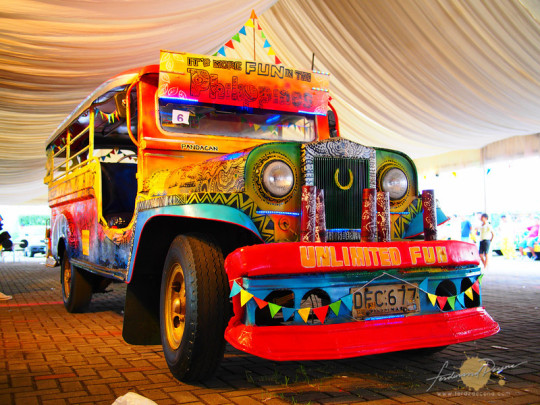
Roaming around the busy roads of the city, reigning supreme with its massive roaring engines and various eye-catching composition, what comes across is the Philippine Jeepney or what was once called, “The Undisputed King of the Road”. Jeepneys, which originated in our home country, symbolize Filipinos’ natural creativity and ingenuity when it comes to integration in forming realistic structures, obtained from the prolific visionaries of our imagination.
Just like a typical vehicle, it is also comprised of machinery essential for long drives; But what makes it stand out from the others is its head-turning feature of being a colorful art-on-wheels vehicle. Jeepney art integrates the "art of the color” and the "art of the accessory", applied to a simple galvanized metal or polished, gleaming metal canvas shell. The use of airbrush spray, stickers, spray paint, or even on-hand paint brush is utilized to create different styles and outlines of art. When it comes to its accessories, the majority of it are hand-picked by the owners, and depending on their personal desires, they would choose to locate where it would be placed. As you have noticed, there are jeepneys with flags at the front, winged-shape stainless metal shell, mini statues at the tip of its front, colorful lights, and many other accessories that are possible to be incorporated. Moreover, the theme of the overall look of a particular jeepney also varies depending on the owner’s choice of preferences. It could be a theme related to their families, religious beliefs, entertainment, culture, minimalism, or even a very creative incorporation of colors and designs to make it look more lively and attractive to the public. Jeepneys are all designed differently, thus, it really showcases the vast creativity of Filipinos when it comes to art making.

Aside from its physical structure and features, its representational value coming from our own Filipino culture and tradition is also being reflected. Just like in the portrayal of the “bahay-kubo”, jeepneys are also built without seat divisions for people to come in and openly interact with each other. Filipinos’ trait of openly getting along with others or in tagalog, “pakikisama”, is highly observed especially when it comes to the passing of each and every individual fare to jeepney drivers. Its main purpose of traveling from point to point in order to help people arrive at their respective destinations also emphasizes the natural helpful trait of Filipinos, and can be comparable to the act of “bayanihan”. In addition, the overall physical appearance of jeepneys, which can be generalized as lively, colorful, and eye-catching, extensively shows Filipinos’ sense of being “full of life”. Its appearance makes the city a livelier place to live in, which deeply reflects Filipinos’ deep affection for our own energetic and spirited culture.
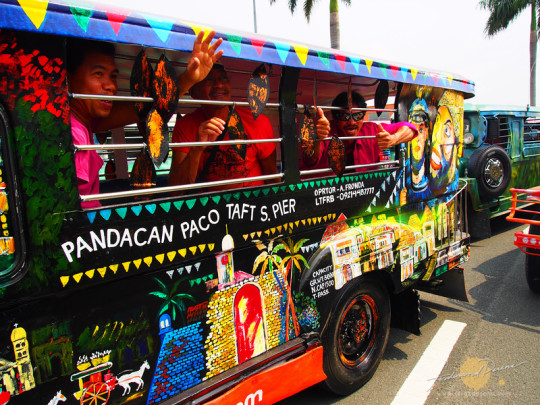
A Jeepney is indeed an art defined beyond Western. An art that showcased the vast creativity and innovativeness of Filipinos. A work of art that is defined by our true ingenuity, inspired by the Philippines’ own culture, beliefs, and tradition. From its aesthetical value, and artistic presentation, down to its symbolism and representational value, it is built admirably, especially with the incorporation of what our country really reflects. For more than 70 years of the country’s struggles, adversity, changes, and advancements, this cultural symbol has always been on our main roads serving its purpose of helping the masses and giving life to the city. It certainly proves its title of being the one and only undisputed “King of the Road”.
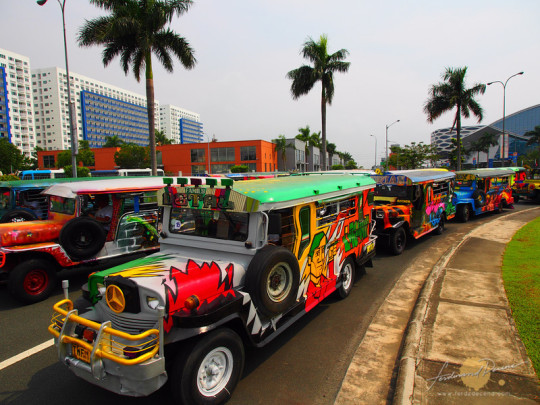
The perception of art’s definition constantly changes through time. There will always be no definite answer to art’s true definition, thus, it will just continuously evolve as the world advance. In the case of its context in the Philippines and in the 21st century, there is still an ongoing discourse and why’s that is due to the fact that Filipinos have a sense of being essentially intact to the worldview, beliefs, and values of art. We don’t just adapt to the set of standards made by Westerners. Because of our natural creativity and innovativeness, different forms of art are being evolved through time, now what is known as the Philippine contemporary arts, which is even beyond the West’s definition.
Now how we can contribute to the ongoing discourse of art’s context is to give emphasis on these creativities, follow its growth, spread it, and expand it. It is also important to have a multi-view approach to the art itself, especially to its underlying message and portrayals. It will also mean a great help if people of the modern era engage with expounding such creativities, as well as practice participating in art makings. And finally, we should learn to give importance to artists’ creative process as this can bring inspiration to aspiring ones that will most likely continue the ongoing act of defining and evolving art.
5 notes
·
View notes
